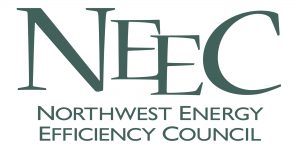The efficiency of electricity use in the Pacific Northwest improved by 254 average megawatts in 2010, the equivalent power use of 153,900 homes, the Council and its partner, the Regional Technical Forum (RTF), reported today.That’s the biggest one-year gain since regional energy-efficiency programs began more than 30 years ago. The measures implemented in 2010 saved Northwest electricity ratepayers $135 million and will produce the same amount of savings every year for the next 15-20 years, at least.The Council and RTF, an advisory committee established in 1999 to verify and evaluate electric energy efficiency savings, calculated the savings from the results of a survey of the region’s electric utilities, the Energy Trust of Oregon, the Northwest Energy Efficiency Alliance, and the Bonneville Power Administration. The 2010 savings surpassed the Council’s target for the year in its Northwest Power Plan, 200 average megawatts, by 25 percent. For more detailed information, visit the Northwest Power and Conservation Council.
The Council presentation on these findings provides good data on how this historical high level of energy savings was achieved, but as yet there has been little conversation regionally about why this happened. In the face of the most difficult economy the region has faced in memory, it seems almost counter-intuitive that 2010 turned out to be such a great year. Undoubtedly, larger incentive budgets play a role, but the overall cost of acquisition rose only 7%. Dramatically higher incentives per kWh saving clearly is not explanatory. At the end of the day, it is ultimately customer response to the proposition of investing in energy efficient practices or services that determines the pace of acquisition. Does 2010 herald a shift in end use customer attitudes toward energy efficiency? Have program designs improved that are superior in enabling customer involvement in energy efficiency projects? Is the 14 year investment in the region into market transformation fertilizing the market soil to produce a bigger crop for harvesting? Are third party administrators of programs achieving better market relationships with targeted markets that produce a greater willingness to participate? Understanding the reasons for the 2010 achievement are likely critical in sustaining this progress over time.
